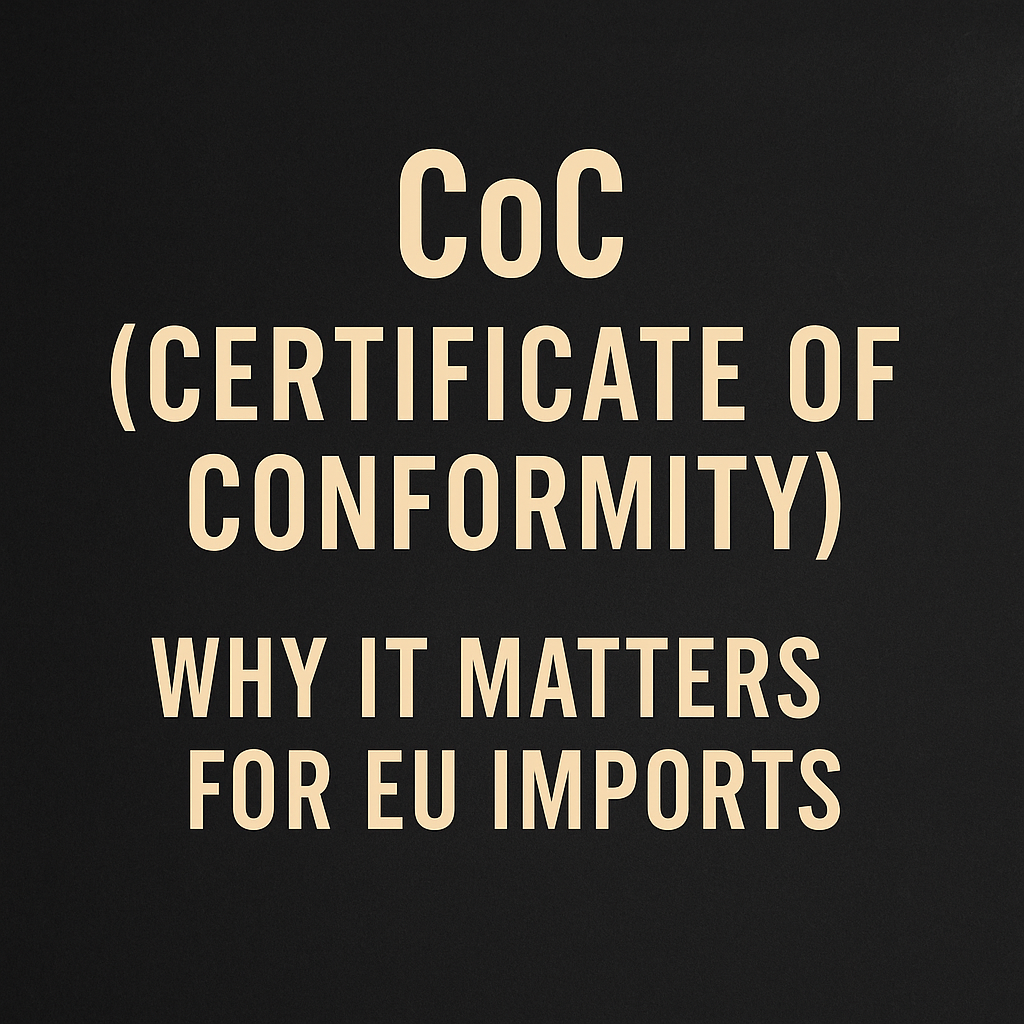
This blog explains why a Certificate of Conformity (CoC) is essential for importing vehicles into the EU. It covers how the CoC simplifies registration, what to do if your vehicle doesn’t have one, and what inspections like TÜV, MOT, or DLV involve. It also touches on taxes (TVA), classic car exemptions, and tips for handling non-EU-spec vehicles—especially those shipped from Dubai.
Let’s say you’ve found your dream car—maybe a Japanese-spec Land Cruiser in Dubai or a low-mileage American muscle car—and you’re ready to bring it into Europe. You've sorted out shipping, insurance, and logistics. But at customs, you're asked for something that sounds deceptively simple yet can derail the whole process: a Certificate of Conformity, or CoC.
A CoC is an official document issued by the vehicle manufacturer. It confirms that a particular vehicle meets the EU standards on safety, emissions, lighting, and environmental impact at the time it was produced. Without it, registration in most EU countries becomes complex and time-consuming.
The CoC is typically available for:
- Passenger cars (M1 category) built for the EU market
- New vehicles sold through EU dealerships
- Vehicles manufactured after 1996
If the car lacks a CoC (common with UAE exports), it requires Single Vehicle Approval (SVA) or Individual Vehicle Approval (IVA). This includes inspection, possible modifications, and fees—often stretching out the timeline and cost.
Upon arrival, present invoices, shipping documents, and pay applicable duties:
- Customs Duty: ~10%
- TVA/VAT: 19–21%, depending on the country
After customs clearance:
- Germany requires TÜV inspection
- The UK requires MOT and possibly IVA
- The Netherlands involves DLV registration and a Keuring test
Dubai cars often don’t come with a CoC because:
- They’re GCC-spec
- Often modified
- May predate EU approval systems
Sometimes you can request one from the manufacturer, especially if the car was originally built for the EU. Non-EU spec cars usually cannot obtain one.
Vehicles over 30 years old might qualify for historic registration, which may bypass CoC requirements. Examples include:
- Germany: H-plate after TÜV approval
- France: Carte Grise de Collection
To improve your odds:
- Hire a specialist import agent
- Collect full documentation
- Budget for modifications and delays
The CoC is a crucial piece of the EU vehicle import puzzle. Without it, you’re navigating complex registration and testing systems. Freight My Car can take the stress out of the process—compliance, testing, and customs included.
Thinking of shipping a car from Dubai to Europe? Let Freight My Car handle the paperwork, testing, and registration. Get your quote now—with fewer surprises and more road time.